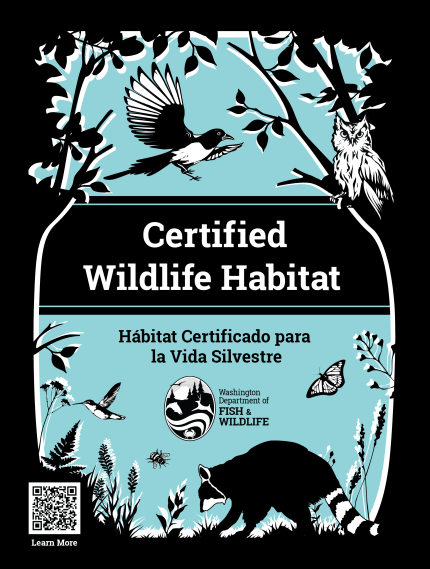By creating habitat for wildlife at home, you are helping to offset the acres of habitat that are lost to housing and urban development each year in Washington. Habitat Fragmentation happens when wildlife habitat is separated by development without leaving pathways for wildlife to safety move between areas they need to access to survive.
What makes a habitat?
- Food: Plants are the best food source for many wildlife species. In addition to providing food, plants can also attract insects who can benefit wildlife.
- Water: All wildlife need water to survive, either from natural or provided sources.
- Shelter: Wildlife need a place to rest and escape from weather and predators. Planting native plants at varying heights benefits wildlife.
- Space: to raise young and survive. Overhead cover can often double as a place for wildlife to raise their young. Bird houses, small trees, shrubs, or plants for pollinators help too.
Apply for our free certification plaque to help raise awareness of the value of creating wildlife habitat in your area. Our free program is open to all types of wildlife habitat.
Apply for a Habitat at Home sign
Download a printable sign application (PDF)
Visit our Living with Wildlife pages to learn more about the species you might see in your habitat; how to coexist with wildlife in urban, suburban, and rural areas, and ways you can adapt your space to prevent conflict with wild animals.
Get involved with science in your wildlife habitat! Our Community Science at Home page has great ways to observe wildlife and contribute to community science, right where you live, work, and play!
Native Plants
Gardening with native plants benefit both you and your local wildlife! A native plant is one that occurs naturally in a specific geographic region and was not brought there by humans. These plants have evolved alongside Washington’s wildlife and are adapted to local environmental conditions. Native plants are low maintenance, decrease pollution, and benefit wildlife and the environment.
New to gardening? Download our starter packet for Habitat at Home (PDF) to learn more about soil, plant placement, seeds, and more!
Native plants are low maintenance
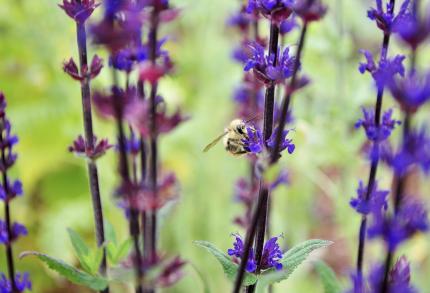
Native plants are adapted to the local rainfall and other environmental conditions. They can be hardier than exotic plants and will thrive without the use of pesticides or fertilizers. Native plants are also better at combatting weeds than non-native plants. Their minimal care and maintenance requirements make them a great addition to any garden. If you struggle to keep plants alive, give native gardening a try!
Native plants decrease pollution
Some native plants are more efficient at removing carbon dioxide from the air than non-native plants due to their deep root systems, which allow them to store more carbon. These deep roots also stabilize the soil and increase the soil's capacity to store water. Using native plants to slow and prevent erosion is a common habitat restoration technique to protect areas that are important to local wildlife.
The roots of native plants also help to absorb storm water runoff and flooding, helping to keep harmful chemicals out of our waterways.
Native plants benefit wildlife and environment
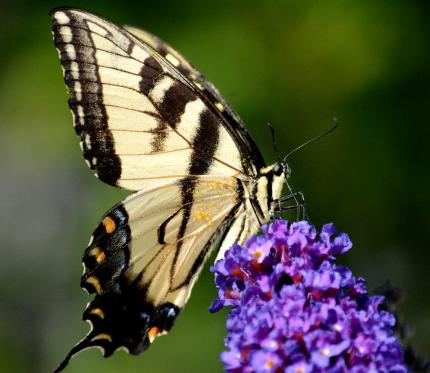
Native plants are best suited to support the wildlife they evolved alongside. They support a greater number of species and life cycles than non-native plants. Research shows that native plants are four times more attractive to pollinators than non-natives. Native oaks support more than 550 different species of butterflies and moths alone, while some non-native species support as little as five. By providing local wildlife with plants better suited to support their habitat needs, we can increase their chances of survival.
Where to find native plants
You can find native plants at many nurseries and retailers, but it can be difficult to know what to look for if you're not prepared before you go. Many county conservation districts offer native plant sales in early spring or fall and can help you decide what to look for based on your needs.
Food
Plants are the best food source for wildlife
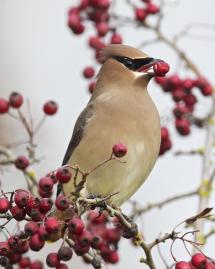
Plants are the best food source for many wildlife species. In addition to directly providing food, plants can also attract insects who benefit wildlife.
Feeders can be used to supplement wildlife diets but cannot provide for them fully. Additionally, to prevent the spread of disease and attraction of unwanted wildlife, feeders must be maintained on a weekly basis.
Consider a variety of plants that can provide food year-round for wildlife. Pay attention to what your backyard wildlife are eating and adjust accordingly!
Remember – wildlife developed adaptations that allow them to survive harsh winter conditions without human intervention. The best way to help wild animals survive a severe winter is to promote year-round quality habitat. Feeding wildlife food is never a good idea, even when it seems that other available food sources may be scarce.
National Audubon has a native plant search engine. Enter your zip code and it will provide several lists to guide you through choosing plants suited to your area. It will give you a list best for birds and other wildlife, a list of all native plants in your area, and a resource page with your closest Audubon location (to reach out to with questions), native plant nurseries, seed sellers and more local resources.
Bird Feeders
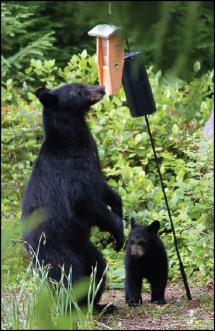
Bird feeders need to be well planned for. Bird feeders often bring in wildlife other than just the birds they are intended for. It important to know who you might draw in and what times of year the species are active so that you can make the best choice for your habitat. For this reason, do not use feeders with nuts, salt licks, or feed domestic your pets outdoors. All of these food sources attract many species and the predators who hunt them. Learn more about feeding and living alongside Washington wildlife species on our Living with Wildlife pages.
Seed feeders and hummingbird feeders are a great way to observe and enjoy wildlife. However, birds need a wide variety of food sources to provide the full range of nutrients they need. Seeds fill just one part of that need. Even with seed feeders, it is important to provide native plants that can help fill those other gaps through fruits and insects, especially caterpillars, which make up a large percentage of baby bird diets.
Bird seed and hummingbird feeders require constant maintenance to make sure they are clean and don't attract unwanted wildlife. Unless you are dedicated to caring for and supporting supplemental feeders, we recommend using plants to support the food needs of local wildlife.
Water
All wildlife need water to survive. Some species get their hydration from the foods they eat, and some drink from water that collects in leaves and flower blooms. Providing water is a crucial element in your wildlife habitat. As droughts linger and temperatures rise, natural ways to access water are not always available. You can help by adding water features year-round or in times of drought or extreme heat.
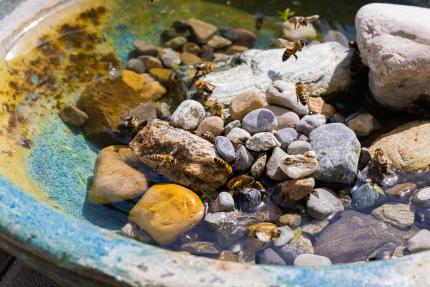
Insect and puddling dishes
When temperatures are high, water evaporates quickly from leaves and flowers. During this time, pollinators such as bees and butterflies will often use water dishes or shallow bird baths. Because these insects can't fly or swim in water, shallow water is safest for them. Providing shallow pans with low water levels or stones for perching can help pollinators and other insects. These are easy to make and a great way to add a watchable wildlife feature.
- Puddling Dishes: Fill a shallow dish with a mix of sand, soil, or compost. Add water to create mud for butterflies to drink and extract nutrients from. Place the dish either in the ground or higher on a flat surface. Check often to keep it moist. Avoid over filling to keep standing water from sitting and attracting mosquitoes.
- Insect watering dish: In a shallow dish place a variety of stones of various sizes. Fill the dish with an inch of water. The stones allow insects and small birds to land and drink safely. Drain completely and replace water every two to three days to keep it clean and avoid mosquitoes.
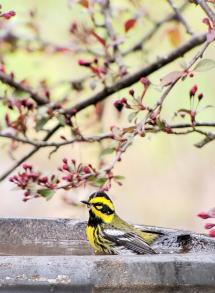
Bird baths
Bird baths are a great way to help and view wildlife. Bird baths are best set up in the shade where small birds can use them without fear of predators from above. Additionally, placing baths in the shade will keep water temperatures lower in the summer and reduce evaporation. Bird baths require regular cleanings, so only add one if you can maintain it. Clean baths by rinsing with warm soapy water, then dunking in a solution of nine parts water and one part bleach, if possible. Disposable gloves are advised when cleaning bird baths.
Be sure to check that your bath is accessible to wildlife and kept clean. The edges of decorative bird baths can be too slippery for birds to hold a grip, rough surfaces work better. Add stones in your bath to help smaller birds perch.
Extreme heat
During heat waves, consider these extra steps to “take the heat off” our wild neighbors:
- Put out extra water dishes of various sizes, hide them under shrubs and plants to give wildlife various places to find both shelter and a drink. If wildlife does not have to expend energy searching out water, they will be able to handle the hot temperatures for longer.
- Refill water sources often. Heat evaporates water and smaller species might not get a chance to drink.
- Move bird baths into the shade to reduce water temperatures and make the water last longer.
- Leave water out and filled at night. In extreme heat some species will shift their activity times to night when temperatures are cooler and they can move safely move throughout their territories.
Human-made water features
Ponds, waterfalls, fountains, and other water features can create a relaxing area and benefit wildlife as well. Research before you install one to find ways to keep water healthy and clean. Moving water helps prevent the growth of bacteria and algae so that chemicals are not needed. Consider the water depth when filled. Install wildlife escape ramps, choose rough surfaces, or add a gradient to the edges if wildlife could become trapped. If the feature is in ground, choose plants around the edges that provide cover for wildlife, and can be used by smaller animals to enter and exit the water safety. Always consider who is in your area and how the water feature might be used so that you can plan for the wildlife in your area. In drought conditions, water features can attract many animals, both small and large.
If you have domestic animals in your space, their watering area will likely be used by wildlife too. Consider who might be sharing your pet's space and plan ahead!
Wildlife escape ramps
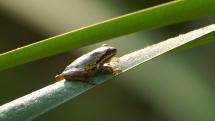
One thing we can all do for wildlife is consider smaller species when we have water features around us. If you have a manmade water source in your area, whether it is meant for wildlife or not, it is important to consider how wildlife will interact with it, especially when animals get overheated during heat waves or droughts. Places like pools, manmade ponds, water troughs, hot tubs and more can trap wildlife if they do not have a way to escape. Small creatures such as amphibians, insects, and small mammals are even more susceptible. Pollinators like bees and butterflies can’t swim and won’t be able to fly away if they fall into water.
- Add vegetation along the edges of all water areas to give smaller animals something to climb out on.
- Create gradual slopes using stones or sediment that mimic natural shorelines to give small animals a place to emerge.
- Create or buy a wildlife escape ramp for larger water features like pools, hot tubs, and water troughs.
Learn to build your own Wildlife Friendly Escape Ramps or watch the Lesson: Constructing Wildlife Ramps.
Natural ponds, streams, lakes, or rivers
- If you have one of these in your habitat, you have a fully functioning ecosystem in your care! Consider yourself a steward of this space and look for ways that you can improve the health of the water and its surroundings.
- Replace invasive species with native plants. Look for species known to live along water edges. These plants will be the best for supporting the species in the water, preventing erosion along water edges, and increasing the health of the aquatic habitat.
- Limit or eliminate the use of pesticides and other chemicals near the water. Consider run off and downstream effects of what goes on around this habitat.
Rain gardens
If you live on the wetter side of Washington, consider a rain garden in your space. Rain gardens help absorb water into the ground, reduce run off and keep plants hydrated longer. Native plants and rocks used in these gardens collect water that can be accessed by wildlife, while providing shelter and passage for many species.
What is a Raingarden? Video from Snohomish Conservation District:
A rain garden is a garden of native flowers, shrubs, and other plants that are planted in a shallow depression and designed to collect rainwater from places that can’t absorb water, like driveways, roads, roofs, and lawns. When rain flows down these areas, it collects everything humans have left behind - harmful chemicals, fertilizer, garbage, oil, and more. We call this water storm water runoff. Plants in rain gardens can filter and retain this water, reducing the amount of water that reaches the sewer system.
Shelter
Wildlife need a place to rest, escape from the weather, and hide from predators. They also need space places to raise their young. Some examples of natural shelter include dense shrubs, log piles, evergreens, rock gardens, or snags. You can supplement shelter and space to raise young by providing artificial habitat items such as bird and bat houses, bee hotels, and amphibian and reptile dens
Plant layers for wildlife
Think about your plants in layers to support different wildlife species. Planting ground cover allows prey animals to forage on the ground safely. Medium height plants like flowers and low shrubs feed pollinators and birds, provide perches, create places for insects, and hide nests from predators. Trees provide canopy where animals forage, perch, and hide while resting. Variety is key for any habitat, so think in high, medium, and low layers when you choose the plant species for your space. Layers also help plants thrive by allowing the soil to absorb and retain additional water and protect each other from harsh weather weather.
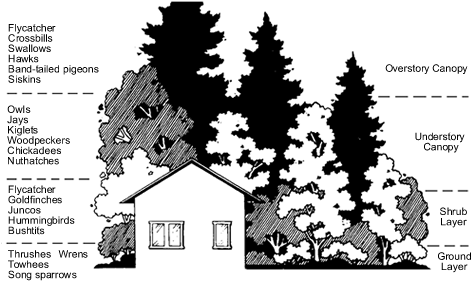
Dead standing trees, also known as snags, are valuable to wildlife and are often referred to as, “the wildlife tree.” For birds and mammals, these trees provide roosts, nesting sites, food, and shelter. Dead branches can be trimmed as needed but keep snags standing if they don’t pose a safety hazard.
Bird houses
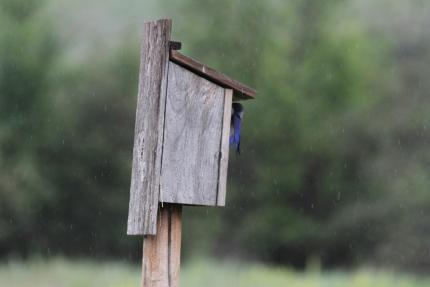
Try to look at what bird species you’ve already seen in your neighborhood and choose a house that will work for those species. Small birds will not want to nest near larger birds that prey on them. Remember to clean out bird houses annually.
This interactive resource from Nest Watch helps you find a bird house for the birds in need in your region and habitat. WDFW has woodworking project plans for many local species.
Bat houses
A bat house is a great way to provide daytime shelter to bats during spring and fall transitions. Bat houses can be mounted high on buildings or set out on free standing posts. Learn more about finding the right place for a bat house with WDFW's care and installation guide (PDF). Visit our blog to learn about how bats use bat houses. Find building plans for bat houses designed for Washington bats. For an in-depth look at bat houses in the Pacific northwest, down Building Homes for Bats: A guide for bat houses in British Columbia (PDF), from Community Bat Programs of BC.
Bee hotels
Pollinators and other insects need shelter too! One of the best things you can do is adjust your gardening and landscaping practices to increase nesting habitat for pollinators. Instead of raking leaves as soon as they fall, leave them in your yard, remove them from walkways, and place excess leaves at the base of trees. When flowers die at the end of the season, trim off the heads but save the stems attached because many insects use these hollow stems as winter protection. You can also purchase or make a solitary bee or insect hotel, but make sure to clean it each year to prevent disease and predators from taking over.
Rock piles and small shelters
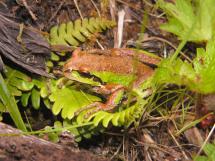
Rock and stick piles make great habitat for some of our smallest species, such as amphibians, reptiles, and insects. These are easy elements to include in any size space. Add a small pile of rocks to a container or build a rock wall into your garden. Include logs in your landscape to create a whole ecosystem that supports wildlife. Some animals will use dug out holes for dens and winter shelters. Leaf piles benefit many of our native pollinators when left over the winter and through early spring.
A source of cover can often double as a place to raise young wildlife. Birdhouses, small trees, shrubs, or plants for pollinators are all good examples. You can also provide nesting materials such as yarn, pet hair, dried grass, and straw. Check out some ways you can make your own sources of cover below, in our woodworking projects for wildlife section.
Sustainable Practices
There are many simple ways to practice resource conservation in your habitat at home!
1. Compost
Learn how you can reduce waste and enrich your soil. Composting is nature’s way of recycling. It is one of the most powerful actions we can take to reduce our trash, address climate change, and build healthy soil. By turning our food scraps and yard trim into compost, we can transform our waste streams into a beneficial, value-added soil amendment and use it to protect the environment and create resilient communities.
Learn more about Composting Yard and Food Waste At Home.
2. Create a rain garden
Rain gardens help reduce pollutants in storm water runoff and benefit wildlife by filtering water before it reaches our rivers, lakes, and oceans. Find out why Rain Gardens are so important and how to create your own. If you live in the Puget Sound area, learn more about rain garden projects taking place in your community.
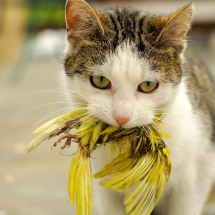
3. Keep cats indoors
Domestic cats are talented predators. Because of their efficient hunting tactics, housecats kill millions of birds, reptiles, amphibians, and small mammals which impacts local wildlife populations dramatically. Additionally, cat feces can spread disease to wildlife. Instead of letting your cats outside, build them a contained outdoor catio or provide enrichment inside. It keeps your cats and local wildlife safer. Visit the American Bird Conservancy website for information on its "Cats Indoors!" program for ideas on how to keep your cats and wildlife safe.
4. Choose pesticide-free plants and avoid chemical use
Predators who prey on rodents, like owls, can be poisoned by eating prey that has eaten rodenticides. This not only harms predators, but can cause prey populations to increase, leaving you with more rodents than you started with. Use chemical-free options like snap traps.
5. Choose native plants
A native plant is one that occurs naturally in a specific geographic region and was not brought there by humans. These plants have evolved alongside native wildlife and are adapted to local environmental conditions. Native plants are low maintenance, decrease pollution, and benefit wildlife and the environment.
6. Let nature be
Use natural mulch by leaving the leaves in yards and only removing them from walkways. Place swept leaves at the base of trees to provide nutrients in the winter. Prune flower heads but leave the stems for insect habitat over the winter. In the spring avoid cutting your lawn for a couple months to help provide pollinator food or replace your lawn with native groundcover or pollinator plants.
7. Recognize your habitat
Apply for a yard sign to recognize your backyard as a wildlife habitat through our Habitat at Home Program. For a national certification, check out the National Wildlife Federation's Certified Wildlife Habitat Program.
